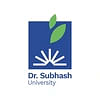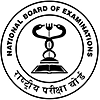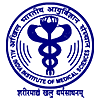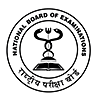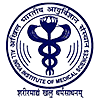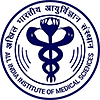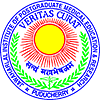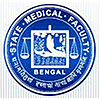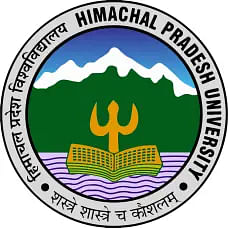
Table of Contents
Uttarakhand Ayurved University determines the syllabus for UAPMT. Questions in UAPMT are based on the subjects such as Physics, Chemistry, Botany, and Zoology of intermediate 10+2. Candidates are required to check UAPMT Exam Pattern 2023.
UAPMT Syllabus 2023 Overview
You can go through the syllabus given below for preparing in a better way for this exam. Syllabus for different subjects like Physics, Chemistry Zoology and Botany is given below.
Syllabus for Physics
UAPMT 2023 Syllabus for Physics section is presented below:
| Topics |
| Atoms and Nuclei |
| Centre for mass |
| Collisions |
| CR circuits (DC only) |
| Current density |
| Dual Nature of Matter and Radiation |
| Elasticity |
| Electromagnetic induction and ac circuits |
| Electromagnetism |
| Electro statics and capacitors |
| Elements of vectors |
| Fluid mechanics |
| Gravitation |
| Kinematics |
| Kinetic theory of gases |
| Magnetism |
| Ray optics and Optical Instruments |
| Rotatory motion |
| Semiconductor devices and Communication Systems |
| Simple harmonic motion |
| Sound |
| Surface tension |
| Thermal properties of matter |
| Thermodynamics |
| Units and Dimension |
| Wave motion |
| Wave optics |
| Wave-power-energy |
Syllabus for Chemistry
UAPMT 2023 Syllabus for Chemistry section is given below:
| Topics |
| Alcohols, Phenols and ethers |
| Aldehydes, ketones and Carboxylic acids |
| Alkali and alkaline earth metals |
| Amines |
| Aromatic hydrocarbons |
| Atomic structures |
| Biomolecules |
| Chemical bonding |
| Chemical equilibrium |
| Chemical thermodynamics |
| Chemistry in everyday life |
| Classification of Elements and Periodicity of properties |
| Coordination compounds |
| Diazonium salts |
| Electrochemistry |
| Environmental chemistry |
| General principles of metallurgy |
| Group 13 elements |
| Group 14 elements |
| Group 15 elements (v group elements) |
| Group 16 elements (vi group elements) |
| Group 17 elements (vii group elements) |
| Group 18 elements (zero group elements) |
| Haloalkanes |
| Haloarenes |
| Hydrocarbons |
| Hydrogen and its compounds |
| Ionic equilibrium |
| Lanthanides |
| Nuclear chemistry |
| Organic chemistry |
| Organic compounds containing nitrogen |
| Polymers |
| Practical organic chemistry |
| Principles of qualitative analysis3 |
| Solid-state |
| Solutions |
| States of matter: gases and liquids |
| Surface chemistry |
| Transition elements |
Syllabus for Botany
The detailed information about UAPMT 2023 Syllabus for Botany is mentioned below:
| Name | Topics |
| The diversity of plant life |
Five kingdom system of classification with their merits and demerits. Structure, reproduction and economic importance of Bacteria and Viruses. Life history of representative members of different plant groups: Spirogyra, Saccharomyces, Funaria, Dryopteris, Cycas. |
| Morphology of angiosperms | Normal and Modified roots, stems and leaves, Inflorescence, Flower and its parts, Pollination, Fertilization, Fruits. |
| Taxonomy of flowering plants |
Principles and units of classification (species, genus, family), Binomial nomenclature, Studies of important families: Malvaceae, Fabaceae, Asteraceae, Brassicaceae, Liliaceae. |
| Cell: Structure and function |
Cell Theory, Totipotency, Prokaryotic and Eukaryotic cell, Structure of typical plant cell: Cell Wall, Cell Membrane, Cell Organelles (Plastids, mitochondria, endoplasmic reticulum, ribosomes, Golgi bodies, Lysosomes, Peroxisomes). Important compounds of the cell: Structure and functions of water, amino acids, proteins, carbohydrates, and fats. Properties and chemical nature of enzymes. Mode of enzyme action. |
| Continuity of life |
Cell division: Mitosis, Meiosis, and their significance, Mendel’s laws of inheritance: Monohybrid and Dihybrid cross, Incomplete dominance, Multiple allelism. |
| Genetic material |
Structure of nucleic acids. Evidence to establish ‘DNA as genetic material’ (Griffith and Avery’s experiment). The concept of gene, Transcription, and translation in Prokaryotes. Regulation of gene expression – induction and repression. |
| Recombinant DNA and Tissue culture technique | Recombinant DNA techniques and its significance. Gene bank, Production of Transgenic plants with examples, Tissue culture technique. |
| Complexities of plant life |
Meristematic and tissues, Internal structures of dicot and monocot stems, roots and Isobilateral and Dorsiventral leaves, Normal secondary growth in dicot stem. |
| Processes in plants |
Diffusion, Osmosis, Plasmolysis, Imbibition, Absorption, and transport of water and minerals, Transpiration and its significance, Life energy and ATP, Respiration and Fermentation, Photosynthesis, Biological nitrogen fixation. Growth and development: Growth regulators – Physiological effects of Auxins, Gibberellin, Cytokinin, Ethylene, and Abscisic acid. Elementary idea of photoperiodism and vernalization. Plant movements (with special reference to geotropism and phototropism). |
| Ecology |
Man and environment, Ecological adaptations (Hydrophytes and Xerophytes), plant succession (Hydrosere, Xeresere), Structure and function of Ecosystem. |
| Economic Botany |
The Economic importance of plants like Rice, Gram (green gram) Jute, Groundnut, Mango, Tulsi. |
| Common plant diseases |
Symptoms and control measure of following plant diseases: Powdery mildew of peas, the Bacterial blight of rice, Mosaic disease of Papaya. |
Syllabus for Zoology
The following shows the UAPMT 2023 Syllabus for Botany section.
| Name | Topics |
| Animal world |
Definition, Scope, and branches of Zoology. Characteristics of living organisms ( an elementary idea of metabolism, transfer of energy at the molecular level, open and closed system, homeostasis, growth & reproduction, adaptation, survival, and death). |
| Classification |
(Artificial, Natural, Phylogenetic) Two-Kingdoms & Five-Kingdoms – their merits and demerits. Species concept, binomial nomenclature, scientific names of some common animals: Fishes – Rohi, Bakura, Mirikali, Kau. Amphibians – Frog, Toad. Reptiles – House Lizard, Garden Lizard, Crocodile, Turtle, Cobra, Krait. Birds – Fowl, Peacock, Pigeon, Crow. Mammals – Tiger, Elephant, Cat, Dog, Rabbit, and Man. |
| The diversity of Animal life: Introductory Concept |
Concept of the body plan, symmetry, coelom, germ layers, homeothermic and poikilothermic. Salient features of Non-chordate phyla with examples, General characters of chordates up to class levels with. |
| Animal Morphology |
Morphology of Paramecium, Sycon, Hydra Planaria, Ascaris, Earthworm, Cockroach, Pila, Starfish, Amphioxus, Bony fish, Cartilaginous fish, Frog, Calotes, Pigeon & Rabbit. |
| Animal Histology | Types – Epithelial, Connective (details about blood and lymph), Muscular & Nervous – Organs and Organ Systems. |
| Animal Locomotion |
Joints and Muscles in the movement of man, mechanism of muscle contraction, Disorders – Arthritis and Osteoporosis. |
| Animal Physiology |
Animal Nutrition – Intracellular and Intercellular digestion, the Digestive system of cockroach, Digestive system and process in human (ingestion, digestion, absorption, assimilation, and egestion) role of hormones indigestion, malnutrition and under-nutrition. |
| Animal Respiration |
Types of respiration (cutaneous, tracheal, bronchial and pulmonary), Structure and function of the respiratory system in man: Respiratory organs, mechanism of pulmonary respiration, pulmonary exchange of gas, transport of gases. Common respiratory disorders – prevention and cure. |
| Animal Circulation |
Open circulation closed circulatory system in man, Structure of Heart, Cardiac Cycle, Arteries, Veins, Capillaries, Portal System, Coronary Circulation, Blood Pressure, Respiratory pigments, Blood groups (A B O & Rh), Blood Coagulation, Blood-related disorder – Hypertension, Atherosclerosis & Arteriosclerosis, Pacemaker. |
| Animal Excretion |
Types of Excretion (Ammonotelism, ureotelism, and uricotelism), Excretion in the cockroach, Excretion in human – Structure, and function of the kidney, Role of liver in excretion: Ornithine Cycle. Disorders related to excretion – kidney failure, dialysis, kidney transplantation, Role of ADH. |
| Control and Co-ordination |
The nervous system of cockroach, Nervous system of human – central, peripheral & autonomic, the transmission of nerve impulse, reflex action, sense organs (Eye and Ear). |
| Human Endocrine System |
Endocrine glands (Name, Location, Hormones and their functions), hormones as messengers and regulators, feedback controls, hormonal disorders. |
| Genetics |
Mendelism, linkage, and crossing over, recombination, sex chromosomes, sex determination, sex-linked inheritance, chromosomal aberrations (structural). |
| Animal Reproduction and Human Development |
Types of reproduction – Asexual reproduction (Binary fission, multiple fission, budding), Sexual reproduction in human – male and female reproductive system, menstrual cycle. |
| Human development |
Gametogenesis (spermatogenesis, oogenesis), fertilization, development up to 3 germ layers, the fate of germ layers, extraembryonic membranes, structure and function of the placenta. |
| Cellular growth |
Hormonal control of growth, Types of regeneration and mechanism (in planaria), ageing (Senescence). |
| Biology in Human welfare (Elementary idea) |
Common problems of adolescence (drugs, alcohol, and tobacco), social and moral implications, mental and addictive disorders, the risk of indiscriminate use of drugs and antibiotics. |
| Biotechnology |
Animal tissue culture, bio-war, biopiracy, cloning and transgenic animals. Elementary idea - organ transplantations, immunity and immune disorders, vaccines and vaccination (recent advances). |
| Modern techniques in diseases diagnosis |
Basic methods of estimation of haemoglobin, sugar, and urea in blood, ELISA and WIDAL tests. Basic principles of ECG, EEG, CT SCAN, MRI, Ultra Sound and Endoscopy, DNA Finger Printing. |
| Human Diseases |
Types, Causes, diagnosis, prevention and treatments – AIDS, STD, Cancer, and Diabetes. |
Note: You are advised to go through the UAPMT Eligibility 2023 to let yourself know whether you are eligible for the exam or not. If you are not found eligible at any stage, your candidature will be cancelled.

